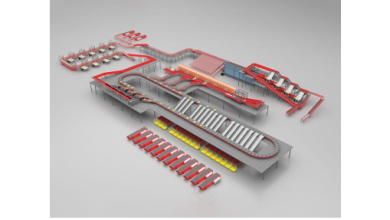The Step-by-Step Guide to Building Your Own NFT Marketplace

This guide will show you how to create your own NFT marketplace. This guide will walk you through setting up and launching your own NFT marketplace.
An NFT marketplace, if you don’t know what it is, is essentially a place where people can trade, buy, and sell digital assets stored on a blockchain. Crypto collectibles are the most popular type. These digital items can be traded, bought, and sold just like physical collectibles.
You will need some technical knowledge to build an NFT marketplace. Don’t worry if your not a tech expert. There are many tutorials and resources online to help you get started.
Once your marketplace is up and running, it’s time to market it to potential customers. You have many options to market your marketplace, including social media, forums and offline methods such as word-of mouth.
It is important to spread the word and inform people about your market. You should see some results within weeks or months if you get enough exposure.
Let’s get started!
Step 1: Select the type of marketplace you want to build
Your first step in creating your NFT marketplace is to choose the type of platform that you want. There are two types of NFT marketplaces, centralized or decentralized.
- Centralized marketplaces look similar to traditional online marketplaces such as Amazon and eBay. They are managed by one company or entity that handles all technical aspects of the platform.
- Blockchain technology is used to power decentralized marketplaces. They are not controlled by any central authority which makes them more vulnerable to fraud and censorship.
It’s worthwhile to research both the marketplaces before you make a decision. Each one has its advantages and disadvantages so make sure to consider all options before you settle on one.
Step 2: Choose a niche for your marketplace
After you have decided what type of marketplace you want, it is time to identify a niche market for your platform. This is crucial because your platform must be focused on a particular market or user group to succeed.
When searching for a niche, there are many factors you should consider, including the type of NFTs that you wish to support, your target audience and your geographical location. You should also consider whether you are going to be focusing on a particular game or genre. This can help you attract more users.
After you have identified a niche, it is time to plan your market. This involves designing the user interface, creating back-end infrastructure and creating a marketing strategy.
Step 3: Create the Back-end Infrastructure
Next, you need to build the back-end infrastructure for your NFT marketplace. This involves setting up servers, databases, as well as other technical components required to operate the platform.
It’s worth paying someone to assist you in this stage of development if you are not a tech expert. It shouldn’t take long to find the right person. There are many NFT Marketplace Development agencies that specialize on blockchain development.
The next step after the back-end infrastructure has been established is to begin working on the interface. This includes the registration process for users, the NFT listing page and the checkout system.
Step 4: Start Your Marketplace
After you have developed the back-end infrastructure and created the front-end interface for your marketplace, it is time to launch it. This is when your platform becomes live and available to users.
You will need to set up a website and find a hosting company if you are running a central marketplace. Decentralized marketplaces will require you to deploy smart contracts to a Blockchain network.
Once your marketplace has been launched, you need to keep an eye on it and ensure that everything works as it should. To attract users, you should market your platform and get things moving.
That’s all! These are the steps to take to create your NFT marketplace. You can read our other articles to learn more about NFTs and blockchain technology. Thank you for reading!





